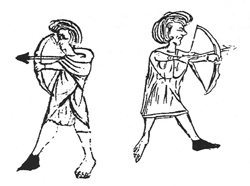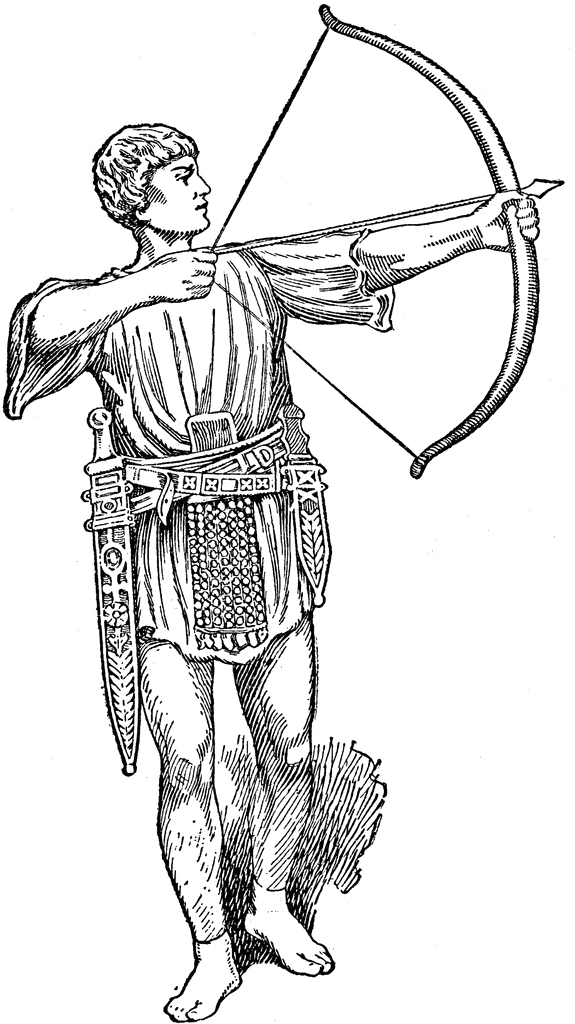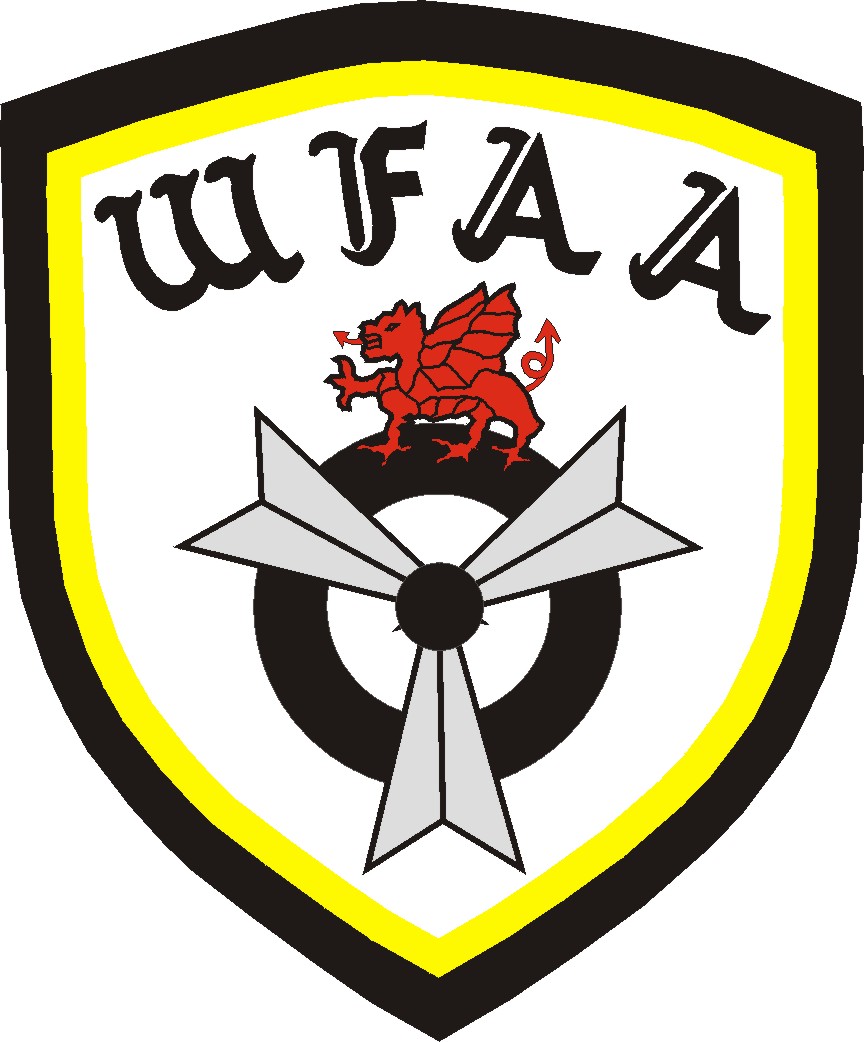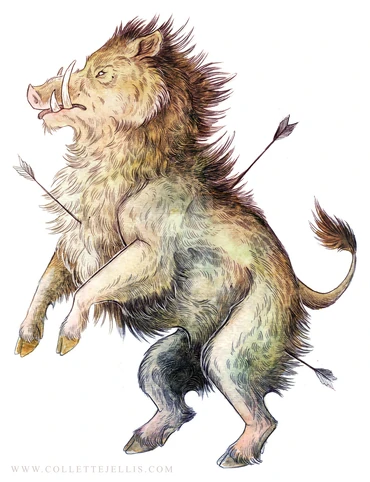Welsh Archery & The Welsh Bow
Welsh Archery
When it comes to archery, few cultures have a legacy as impressive as the Welsh. The Welsh have been wielding bows and arrows for centuries. Their reputation as formidable archers has been well-earned through a rich and fascinating history. This article delves into the legends and history of Welsh archery.
Archery was a way of life for the Welsh, with many medieval Welshmen trained from a young age to shoot with deadly accuracy. This archery tradition was so crucial that the Welsh longbow became a symbol of Welsh identity and independence, with many Welsh archers playing a key role in battles throughout history.

Historical Records of Welsh Archery
Giraldus Cambrensis, a 12th-century Welsh cleric and chronicler, wrote extensively about Welsh customs and traditions, including the art of archery. He encountered archery in the South of Wales, yet it seems to be absent in the north.
Giraldus was not only an avid writer but also a skilled archer himself. He praised the Welsh bow as a weapon of great power and accuracy, noting that it was capable of piercing armor at short range. Giraldus wrote of arrows penetrating ‘a hand’s width deep into an oak door’, ‘through a man’s armor and thigh, into his horse’, and ‘through an armored horseman’s hip, into his saddle’.

In addition to his praise of the Welsh bow, Giraldus also wrote about the training and discipline required to become a skilled archer. He noted that archers were expected to practice regularly, maintain strict physical fitness, and exhibit a keen sense of mental focus and control.
But Giraldus was not all business when it came to archery. He also had a playful side, and he enjoyed regaling his readers with colorful stories and anecdotes about the archers he encountered in his travels. One of his most famous stories involves an archer who was able to shoot a bird in mid-flight, earning the admiration of all who witnessed the feat.
Overall, Giraldus Cambrensis’s writings on Welsh archery provide a fascinating insight into the world of archery in medieval Wales.
Early Welsh Bows
According to our source, Giraldus Cambrensis, the early Welsh bows were not made from yew but rather wych elm. The early Welsh bows are not long compared to later bows. They measured roughly 4 feet long and were unworked rough pieces of wood.
They were however quite effective at medium and especially close range. Welsh battle tactics commonly involved charging the enemy and then retreating into wooded areas. The idea, much like the feigned retreat of the steppe nomads, was to lure the enemy into pursuit. An ambush would then be ready to spring the trap. This tactic seems to have been favorable in the hilly and wooded terrain of southern Wales.

The Newcomers & Archery
Archery, being well utilized in continental Europe for hunting and warfare, was brought over to the British Isles by various waves of migrating peoples. Archery however seems to not have been a common practice in Northern Wales, Scotland, or Ireland. Before we go back to the specific topic of Welsh archery, let us examine some history of Britain, specifically, the history of its invasions by continental Europeans, beginning with the Romans and culminating in the Norman invasion.
First came to Romans. The Romans invaded Britain in 43 AD, during the reign of Emperor Claudius. The Roman invasion was led by Aulus Plautius, who commanded four legions of Roman soldiers, and was initially successful in establishing a foothold on the island. Over the next few decades, the Romans gradually expanded their control over Britain, building fortifications, roads, and other infrastructure, and establishing a network of towns and cities.

Roman occupation of Britain lasted for nearly four centuries, until the early 5th century AD when the empire began to withdraw its troops and resources from the island in response to threats from other parts of its territory. The invasion and occupation of Britain had a profound impact on the history, culture, and language of the island, and their legacy can still be seen in a range of areas, from architecture and engineering to law and governance.
Romans and Archery
For a more in-depth article on this subject, please see our article on Roman archery here. The Romans invaded Britain in 43 AD, during the reign of Emperor Claudius. The Roman invasion was led by Aulus Plautius, who commanded four legions of Roman soldiers, and was initially successful in establishing a foothold on the island. Over the next few decades, the Romans gradually expanded their control over Britain, building fortifications, roads, and other infrastructure, and establishing a network of towns and cities.
The Roman army included archers and used composite bows. Archery played a role in various contexts such as siege warfare, ambushes, and open battles. However, it was not their primary focus and the Romans relied on superior technology, organization, and tactics to conquer Britain.
The Anglo-Saxons
The Anglo-Saxons invaded Britain in the 5th and 6th centuries AD, following the collapse of the Roman Empire and the withdrawal of Roman troops from the island. The exact date of the beginning of the Anglo-Saxon invasion is not clear, but it is generally believed to have occurred in the mid-5th century, around the year 450 AD. The invaders, a group of Germanic tribes from the region now known as Denmark, Germany, and the Netherlands, began to settle in Britain, establishing their own kingdoms and societies and displacing the indigenous Celtic-speaking population.

Anglo-Saxon Archery
The Anglo-Saxon invasions of Britain were a pivotal moment in the country’s history, marked by violence, bloodshed, and the displacement of indigenous populations. The invaders, a Germanic people from the continent, brought with them a range of weapons and tactics that allowed them to dominate the local population and establish their own kingdoms and societies.
One of the most important weapons that the Anglo-Saxons brought with them was the bow and arrow, which had been a crucial part of Germanic military tactics for centuries. The bow was a powerful weapon that could strike from a distance, allowing the invaders to engage their enemies without exposing themselves to close-range combat. With their skill and expertise in archery, the Anglo-Saxons were able to dominate the battlefield and overcome the indigenous populations that stood in their way.
The use of archery in the Anglo-Saxon invasions was not limited to the battlefield, however. The bow and arrow also played an important role in hunting and food gathering, allowing the invaders to supplement their diets with fresh game and other resources.
However, it is important to note that the Anglo-Saxon invasions were a dark and violent period in British history, marked by conflict, displacement, and cultural upheaval. The use of archery, while a powerful military and cultural tool, was also a symbol of the invaders’ dominance over the indigenous population and their willingness to use force to achieve their goals.
The Vikings & Normans
The Vikings were also well acquainted with archery. They had powerful bows which they kept on their longboats for war. They were also using horn bows, that is composite bows that they may have acquired through trading. The Vikings were more interested in raiding than settling the British Islands. Check out our article on Viking archery here.
The Normans, however, being descended from Vikings, did make extensive use of archery. The Norman invasion of 1066 included archers in their ranks. They used tactics such as the arrow storm. The Battle of Hastings was fought on Senlac Hill, where Harold’s forces were defeated. The victory was largely due to William’s tactics and the use of archery. The Normans introduced new military innovations and influenced English society and culture. The Bayeux Tapestry depicts archers and other aspects of the battle. The Bayeux shows the use of archers, yet it suggests they did not have excessively powerful bows. The Norman Conquest had a lasting impact on English history and archery tactics.

There seems to have been little interest from the Normans (much like the Romans and Anglo-Saxons before them) in fully occupying Wales. There is however a record of the Normans taking archers with them into an incursion into Wales in 1136.
Welsh Archery & Anglo-Norman Incursion
The Anglo-Norman incursion into Wales in 1136 was marked by the use of archery tactics. The Normans relied on archers as a key component of their army, and they brought with them the latest in military technology, including the longbow. However, the Welsh also had skilled archers, who played an important role in their resistance to the invasion.
The Welsh army used guerrilla tactics and local knowledge to their advantage. They would often hide in the forests and mountains, waiting for the right moment to launch an attack. When the Normans marched through narrow passes or into ambushes, the Welsh archers would rain arrows down upon them. These tactics proved successful in the early stages of the conflict.
The Normans responded by building castles and fortifications, which served as strongholds from which they could launch attacks. The Welsh continued to use archery tactics, but the castle walls provided some protection from the arrows. The Normans also developed new tactics, such as the use of crossbows, to counter the Welsh archers.
The conflict between the Normans and the Welsh continued for several decades, and archery played an important role throughout. The use of archery tactics was a key element in the resistance of the Welsh against the Anglo-Norman incursion. The conflict had a lasting impact on Welsh history and culture, and the legacy of archery can still be seen today in Wales.
Strongbow & Welsh Archery
Giraldus, writing in 1188 about the Norman invasion of Ireland in 1166-85 described a Norman noble by the name of Richard de Clare, nicknamed “Strongbow”. He was invited by a deposed Irish King of Leinster to help him recapture Dublin. This was accomplished in 1170.
Strongbow was joined in Ireland by a fellow Norman noble by the name of Raymond Fitzgerald in 1174. He brought with him some 300 Welsh archers to help him subdue the Irish, who at this time only fought with stones and spears. Being quite effective at close range, Fitzgerald kept the Welsh close at hand in Ireland for the next 3 years.

Welsh Archery and England
Nationalism began to grow in Wales during the mid-13th century. There was a deathbed claim to all of Wales made by a Northern Welsh king named Llewelyn. This claim began to actualize when Llewelyn’s grandson, also named Llewelyn, made a fresh claim to all of Wales. King Henry III of England recognized this claim and gave Llewelyn the title “Prince of all of Wales”.
However as soon as Edward I came to power in England, he made it quite clear that this recognition was not to last. He invaded the territories of Northern Wales with a force of roughly 6000 English and 9000 South Welsh. Llewelyn was forced to retreat and sign a treaty in 1277.
However, in 1282, Llewelyn was able to initiate another rebellion. This time Edward gathered 3 large armies and invaded the South, Middle, and Northern Welsh. Llewelyn was killed and Edward set about building a string of castles around Wales to ensure the future pacification of the region. Several of these impressive structures still stand today.

Longbow Evolution
For more details about the longbow, please check out our page on the English longbow here.
It was in 1295 and into the early 1300s that the Welsh and/or English longbow came into their recognizable and heavy warbow form. Edward I was actively engaged in military reform and advancement. His new “battle line” consisted of interwoven archers and cavalry. The idea or strategy was to initially arrow storm from a distance, hopefully causing disruption and disarray in the enemy’s lines. This would be followed by the cavalry, which would be able to cut down the disrupted and softened enemy.
It is around the early 1300s that we see the use of yew as the prime material for longbow construction. You could say the medieval longbow proper is born around this time. Archers before the 1300s are depicted as wielding much shorter bows (roughly 4.5′ to 5′ in length) and drawing the chest. After the 1300s archers are shown with the mighty 6-footers drawing to the side of the head.

Some archers wielding their 6-foot yew longbows are depicted in The Smithfield Decretals, which are fabulously illustrated manuals dating from the early 1300s.
There is also tantalizing evidence for the evolution of warbows in the form of some surviving arrowheads. Arrowheads recovered from prior to the 1300s have sockets 0.3” to 0.35” wide. Surviving arrowheads dated after the 1300s have sockets that are 0.45” to 0.5” wide. This implies a bow capable of shooting much larger and heavier arrows.
Welsh Archery Legends
There are many Welsh legends about archers, including:
- Branwen ferch Llŷr – In this legend, Branwen is a skilled archer who helps her brother defeat an invading army.
- Gwalchmai ap Lot – Gwalchmai is a legendary archer who appears in the Mabinogion, a collection of Welsh tales.
- Rhys ap Tewdwr – According to legend, Rhys ap Tewdwr was a skilled archer who fought against the Normans in the 11th century.
- Twrch Trwyth – This legend features a wild boar who is said to be immune to arrows until an archer named Mabon defeats it.
- Owain Glyndŵr – Owain Glyndŵr was a Welsh prince who led a rebellion against the English in the 14th century. He is often depicted as a skilled archer.
These legends illustrate the importance of archery in Welsh culture and history and the reverence with which skilled archers were held.
Modern Welsh Archery
Welsh archery is still alive and well to this day and there are several archery clubs and organizations in Wales.
Wales Archery
A family-run business based in Wales, with multi-generational expertise in all things archery.

Welsh Archery Association
According to their website: “The Welsh Archery Association (WAA) was established in October 2000, it was formed by merging the North Wales Archery Society (founded in 1953), South Wales Archery Society (founded in 1951), and the Welsh Archery Federation (formed during the early 1970s) into one national region. The WAA is affiliated with the national governing body of archery, Archery GB”

Welsh Field Archery Association
The Welsh Field Archery Association (WFAA) is the governing body of field archery in Wales. The WFAA is affiliated to the world governing body, the International Field Archery.

References:
Tony Kench, Upper Warden
The Worshipful Company of Bowyers
19 November 2014
Bibliography
Of the many dozens of books on various aspects of the ground covered in this paper, the most
useful and factual sources for this paper were found to have been:
Giraldus Cambrensis, ‘The Journey Through Wales’ and ‘The Description of Wales’
(1188, translated from Latin by Dr Lewis Thorpe 1978)
Giraldus Cambrensis, ‘The English Conquest of Ireland AD 1166-1185’
(1188, translated from Latin by Dr Frederick J Furnivall 1893)
Barbara Megson, ‘Such Goodly Company, A glimpse of the life of the
Bowyers of London, 1300-1600’ (1993)
J E Morris, ‘The Welsh Wars of Edward I’ (1901)
Lt Col A H Burne, ‘The Crecy War’ (1955)
Dr Andrew Ayton and Sir Philip Preston, ‘The Battle of Crecy, 1346’ (2005)
Dr Michael K Jones, ‘Agincourt 1415’ (2005)
University of Southampton, ‘Agincourt Project’ (www.agincourt.soton.ac.uk)
Hugh D H Soar, ‘The Crooked Stick, A History of the Longbow’ (2004)
Richard Wadge, ‘Arrowstorm: The World of the Archer in the Hundred Years War’ (2007)
Richard Wadge, ‘Archery in Medieval England: Who Were the Bowmen of Crecy?’ (2012)

